La Source, Eau Rouge, Les Combes, Blanchimont, Pouhon - Spa has plenty of exciting corners that push the drivers to the limit. No better place to drive a Formula 1. Spa is the track of talent, of touch of the champion. If you win at Spa you get into Olympus of speed. The track of tracks.
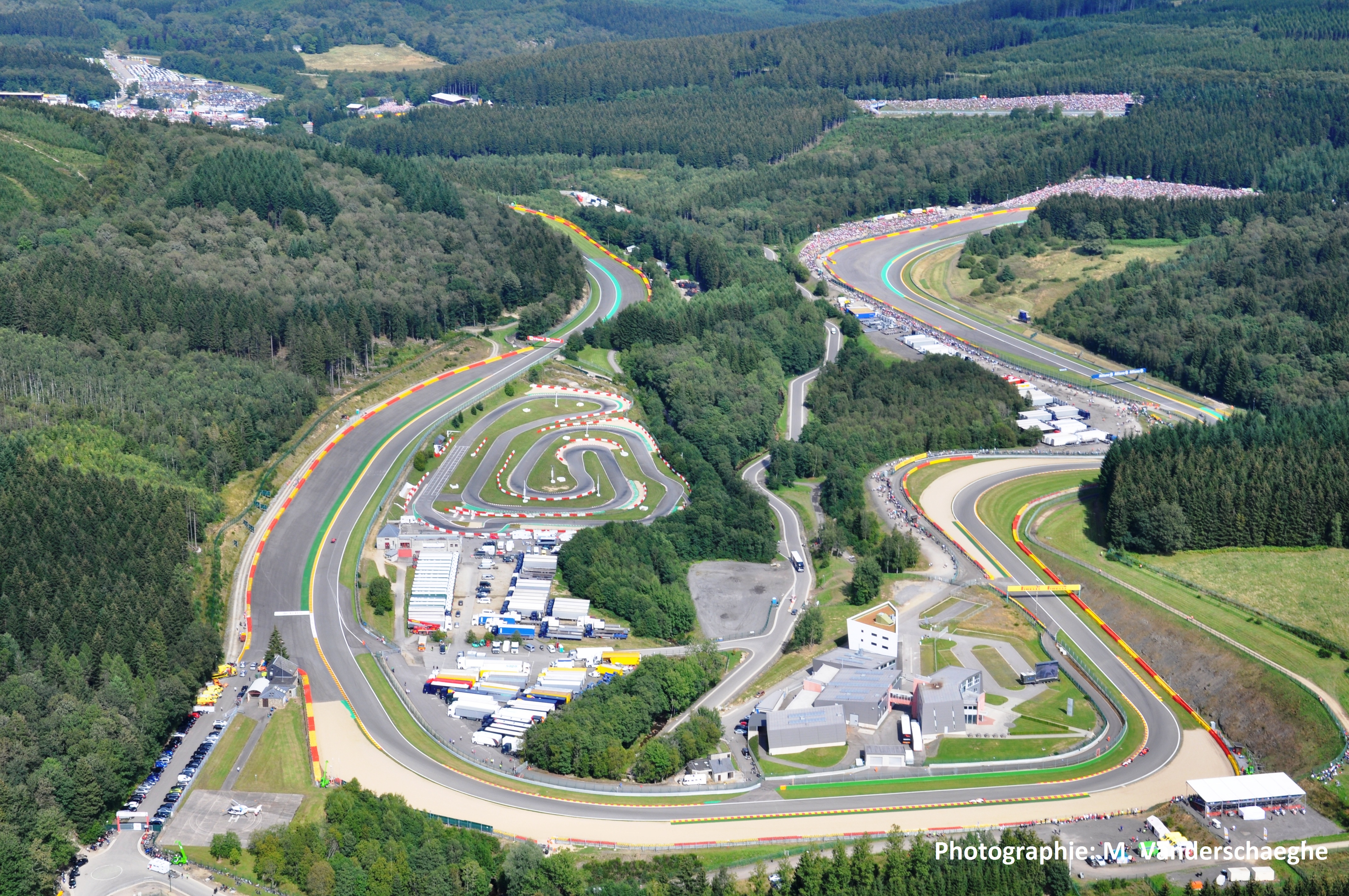
Since the early 1920s, the Spa-Francorchamps circuit has resounded with a thousand and one fabulous tales of those heroic times in which drivers raced on earthen roads at the wheel of awesome machines.
The track is among the most historic on the Formula One calendar, having hosted a (non-championship) Grand Prix as long ago as 1924. Conceived by Liège aristocrats within a magic triangle between Francorchamps, Malmédy and Stavelot, its route through the magnificent scenery of the Ardennes has taken on a force of character that has stood the test of time.

In the photo the start of the 1968 edition of Spa, won by Bruce McLaren in a McLaren-Ford.
Run on narrow public roads, the original Spa layout was an amazing 14.9 kilometres long and notoriously dangerous. In 1939, human imagination gave birth to a unique bend. Raidillon - Eau Rouge was to become famous throughout the world, the cynosure of every driver. The lap distance was reduced slightly over the years, with some corners eased, but when the 'old' circuit staged its final Grand Prix in 1970 it still measured just over 14 kilometres and remained staggeringly quick - Chris Amon set that year's fastest lap at an average speed of just under 245 km/h.
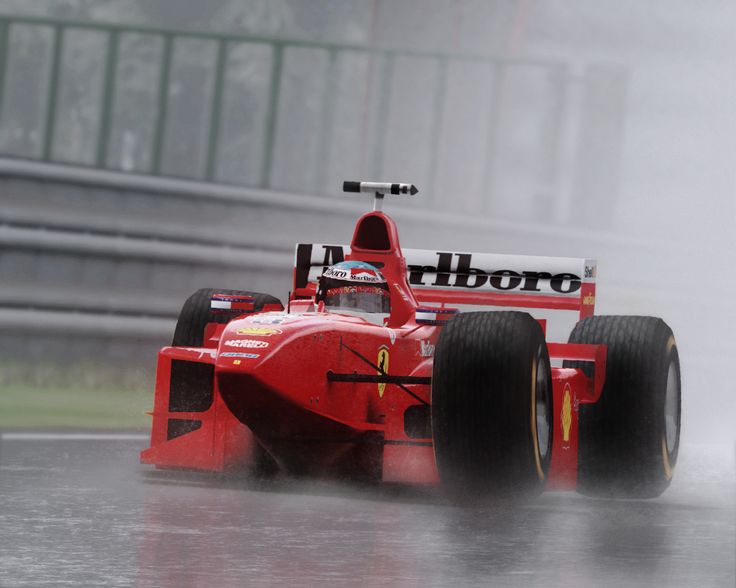
Michael Schumacher, Ferrari, in 1998.
Spa did not return to the calendar until 1983 and then in drastically revised form, with lap distance cut. At 7.004 kilometres in length, even the revised Spa is the longest circuit on the F1 calendar. Somehow, though, the circuit's magic was retained. Around two thirds of the lap used the original layout and the legendary Eau Rouge corner remained intact. Only the new Bus Stop chicane on the run down to La Source drew criticism.
Spa’s mix of long straights and challenging fast corners, coupled with its picturesque setting, means that most drivers still rank it among their favourite tracks. The weather is still notoriously changeable (it can often be simultaneously raining on one part of the track and dry on another) and Eau Rouge, with its high speed and sudden elevation change, maintains its reputation as one of Formula One racing's most technically demanding corners. Such is the challenge of Spa that only the truly great drivers can really claim to have mastered it. In fact, just six men have won the race more than twice - Juan Manuel Fangio (three times), Damon Hill (three times), Kimi Raikkonen (four times), Jim Clark (four times), Ayrton Senna (five times) and Michael Schumacher (six times).
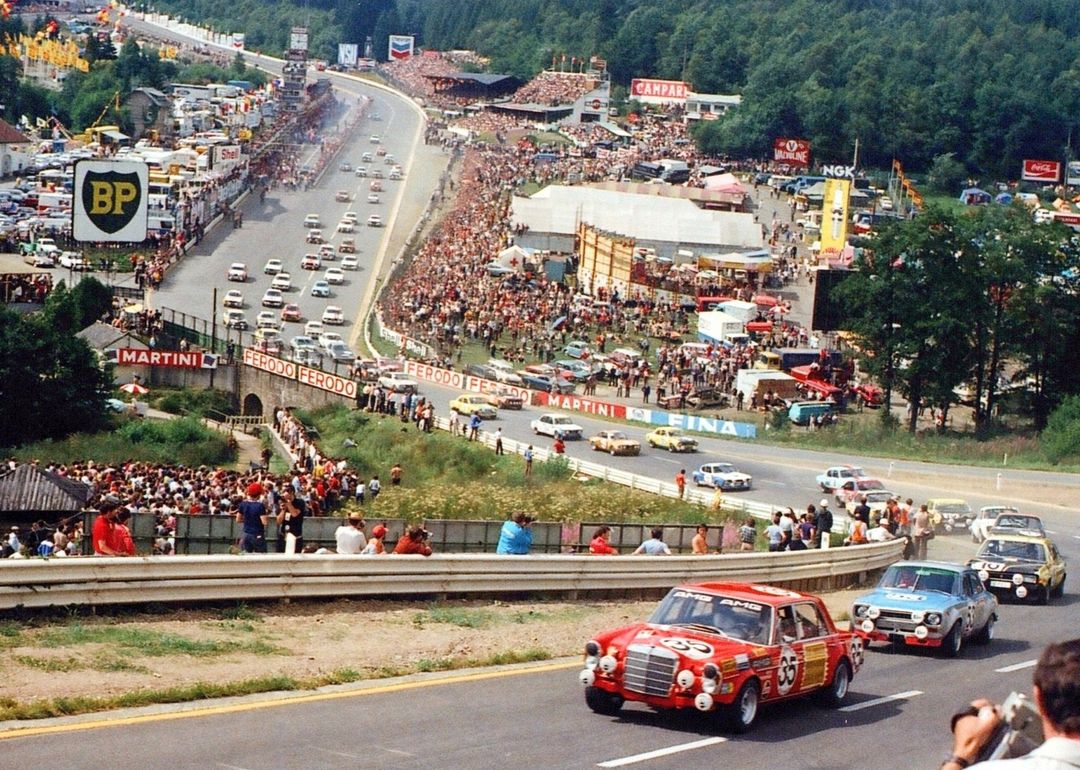
Spa-Francorchamps 24 Hours in 1971.
The Circuit de Spa-Francorchamps motor-racing circuit is the venue of the Formula One Belgian Grand Prix and of the Spa 24 Hours and 1000 km Spa endurance races. It is one of the most challenging race tracks in the world, mainly due to its fast, hilly and twisty nature. Despite its name, the circuit is not in Spa but lies in the vicinity of the town of Francorchamps within the boundaries of the municipality of Stavelot, with a part in the boundaries of Malmedy. Spa is located in the Belgian Ardennes countryside, and the old circuit was (and still is) used as everyday public road, and there were houses, trees, electric poles, barnyards, fields and other obstacles located right next to the track.
Before 1970, there were no safety modifications of any kind done to the circuit and the conditions of the circuit were, aside from a few straw bales, virtually identical to everyday civilian use. Former Formula One racing driver and team owner Jackie Oliver was quoted as saying "if you went off the road, you didn't know what you were going to hit". Spa was the fastest road circuit in Europe at the time, and it had a nasty reputation for being dangerous and very fast- it was a circuit known to be one for the brave, and most drivers were frightened of it.
Like the Nürburgring and Le Mans circuits, Spa became notorious for fatal accidents, as there were many deaths each year at the ultra-fast track. The Masta Kink was one of the most fearsome sections on any race track in the world, requiring skill and bravery in equal measure to get it right. After a long run from Malmedy, the cars would reach top speed before having to negotiate Masta, a high-speed left-right chicane. This was a very fast and very dangerous corner because it was situated right in the middle of two very long unbroken straights both about 1½ miles long (2.4 km). The speed in this sector could reach 190 mph. Masta was lost to F1 racing after the 1970 race.
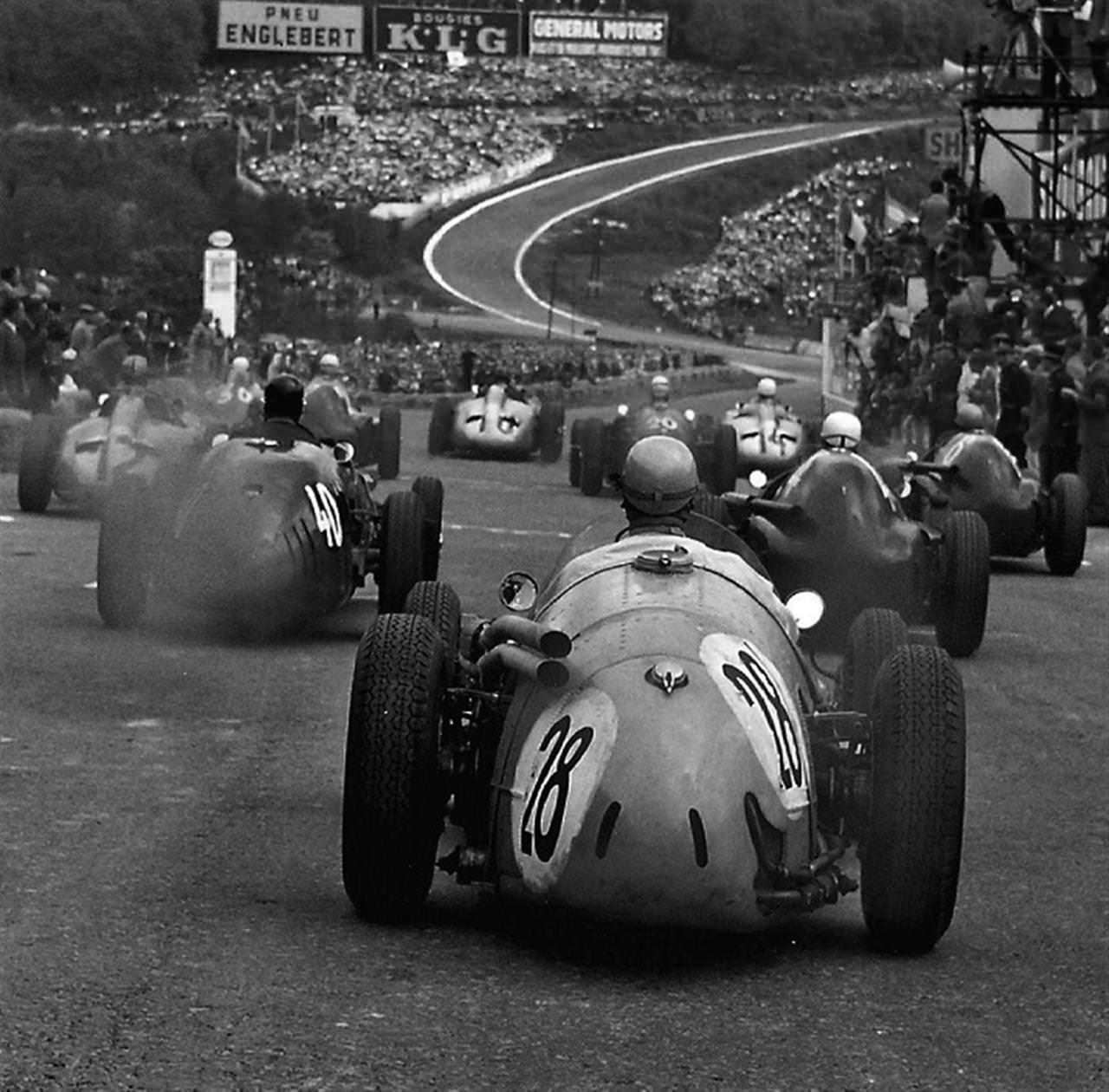
Stewart later compared the old Spa circuit in 1986 as being “as ferocious as a tiger” and he later described Masta in an interview in 2011 as perhaps “the hardest corner on any racetrack I raced on in career; even more so than Eau Rouge”. Eighteen Formula One World Championship Grands Prix were run on the Spa-Francorchamps circuit's original configuration, which was boycotted by F1 in 1969, before the revised circuit banished it to the history books in 1979.
Over the years, the Spa course has been modified several times. In 1939, "Virage de Ancienne Douane" was eliminated and cut short, thus giving birth to the Eau Rouge/Raidillon uphill sweeping corner. Like its predecessor, the new layout still is a fast and hilly route through the Ardennes where speeds in excess of 330 km/h (205 mph) can be reached. The circuit probably demonstrates the importance of driver skill more than any other in the world. This is largely due to the Eau Rouge and Blanchimont corners, both which need to be taken flat out to achieve a fast run onto the straights after them, which aids a driver in both a fast lap and in overtaking.
The most famous part of the circuit is the Eau Rouge / Raidillon combination. Having negotiated the La Source hairpin, drivers race down a straight to the point where the track crosses the Eau Rouge stream for the first time, before being launched steeply uphill into a sweeping left-right-left collection of corners with a blind summit. Properly speaking, the Eau Rouge corner is only the left-hander at the bottom. The following right-hander that leads steeply uphill, which was introduced in 1939 to shortcut the original hairpin "Ancienne Douane", is called "Raidillon". The corner requires an amount of skill from the driver to negotiate it well and the long straight ahead produces good overtaking opportunities for drivers at the following "Les Combes" corner. The corner was tighter and narrower (it was made wider in 1970, when the circuit was updated) on the old circuit than it is today. It is now faster.
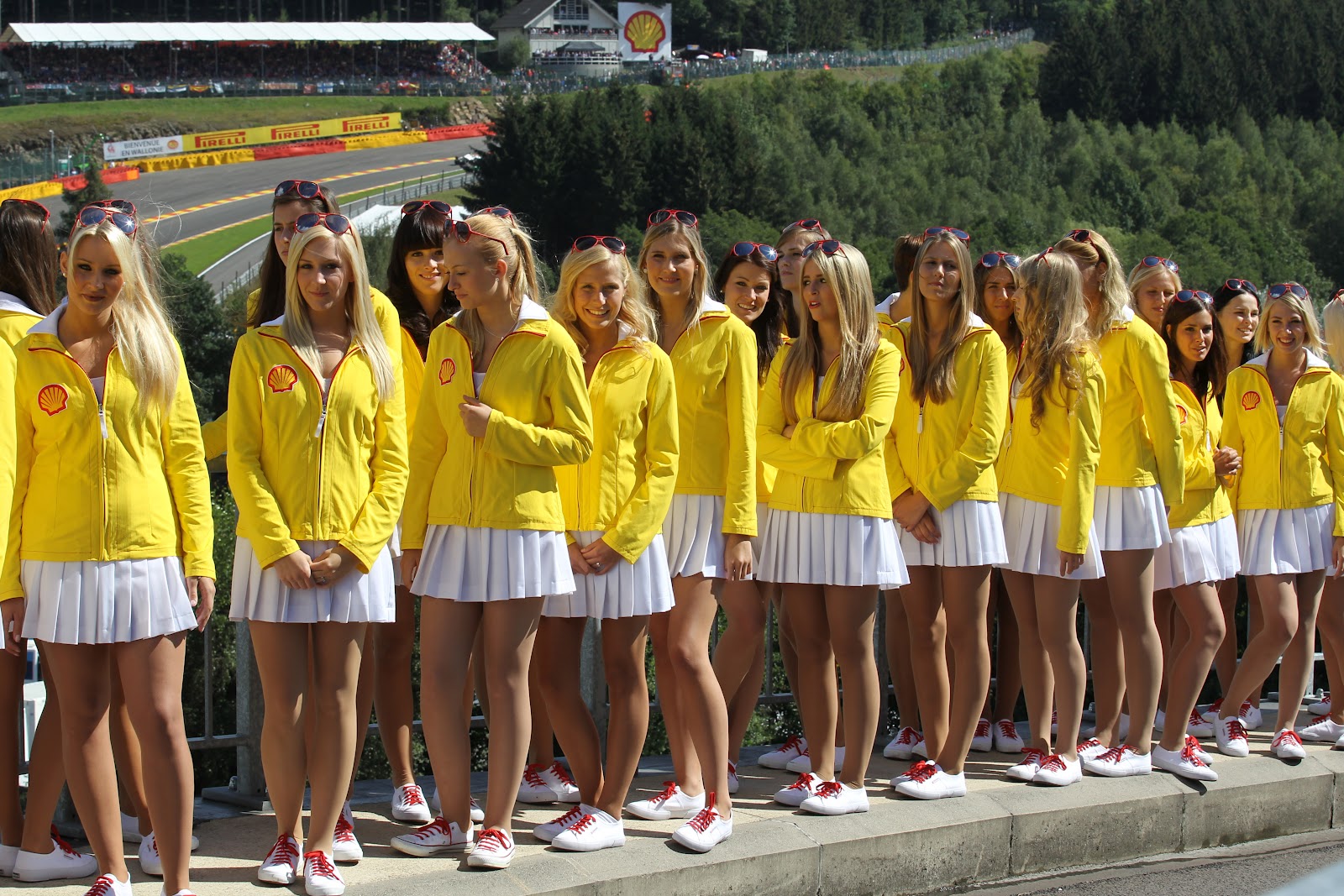
Grid girls at Spa Francorchamps, Belgium, on September 01, 2012.
The 2005 and 2006 F1 World Champion Fernando Alonso explained: "you come into the corner downhill, have a sudden change [of direction] at the bottom and then go very steep uphill. From the cockpit, you cannot see the exit and as you come over the crest, you don't know where you will land. It is a crucial corner for the timed lap, and also in the race, because you have a long uphill straight afterwards where you can lose a lot of time if you make a mistake. But it is also an important corner for the driver's feeling. It makes a special impression every lap, because you also have a compression in your body as you go through the bottom of the corner. It is very strange – but good fun as well".
The challenge for drivers has always been to take Eau Rouge-Raidillon flat out. Nowadays it’s not a problem anymore. Regular touring cars can take the corner at 160–180 km/h, Formula One at over 300 km/h. This is due to the huge amount of downforce on the cars. World Champion Jacques Villeneuve once spoke of the effects of downforce saying that to get through the corner they have to go faster as the faster the car is going the more downward force there is. Without lifting the throttle for Eau Rouge, a car would be flat out from La Source, along the Kemmel straight to Les Combes, a total distance of 2.015 km.
Still, a loss of control in this section often leads to very heavy shunt as usually the rear-end of the car is lost and the impact is most of the times lateral. Eau Rouge has claimed several victims over the years, and also caused Jacques Villeneuve's spectacular off in qualifying in 1999, which he described as "my best-ever crash".
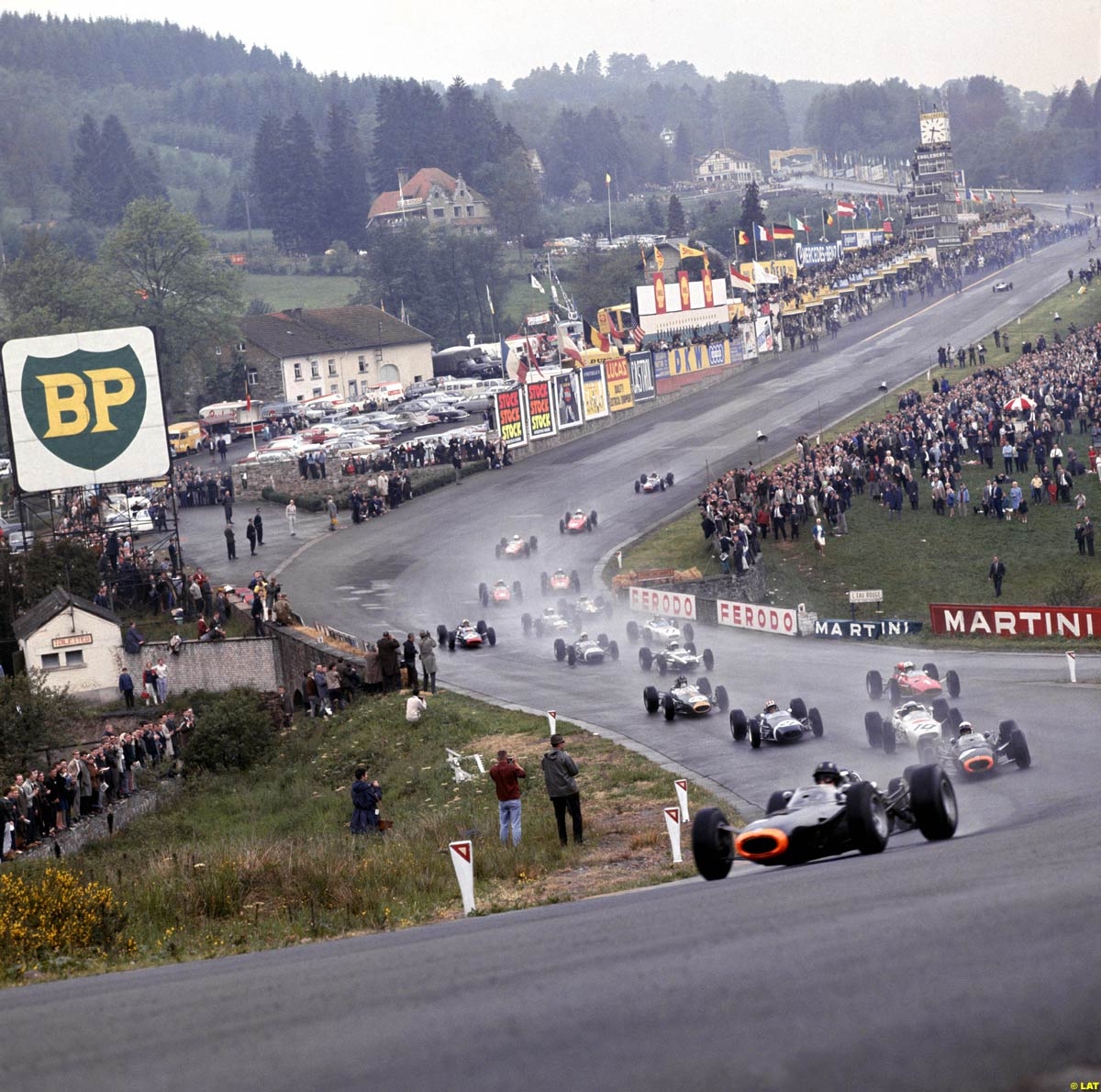
"What you spend driving in Spa is the most rewarded time in the life of a driver." Niki Lauda
Felipe Massa said: “Spa is one of the best tracks in Formula One. I think it will be incredible to drive there with this new car, with more downforce. Eau Rouge will feel like a straight but so many other corners will also be amazing to drive”.
Max Verstappen: “Spa is my favourite track of the year. You have to get everything right but when you get a good lap it’s very rewarding. There is a good flow with the fast corners and of course the best moment is Eau Rouge where you go up the hill, even though it’s easy full throttle in modern F1 cars it’s still very nice when the underneath of the car touches the tarmac and then gets very light at the top of the hill. This year it’s going to be a bit faster everywhere with the new cars which will be more challenging and more fun for sure."
Daniel Ricciardo: “I really enjoy Pouhon. It’s a fast, downhill and left-hand turn. That’s probably my favourite corner. The Les Combes area you have to get right too as it’s pretty important. Then the last corner is not very pretty at all but crucial for a good lap”.
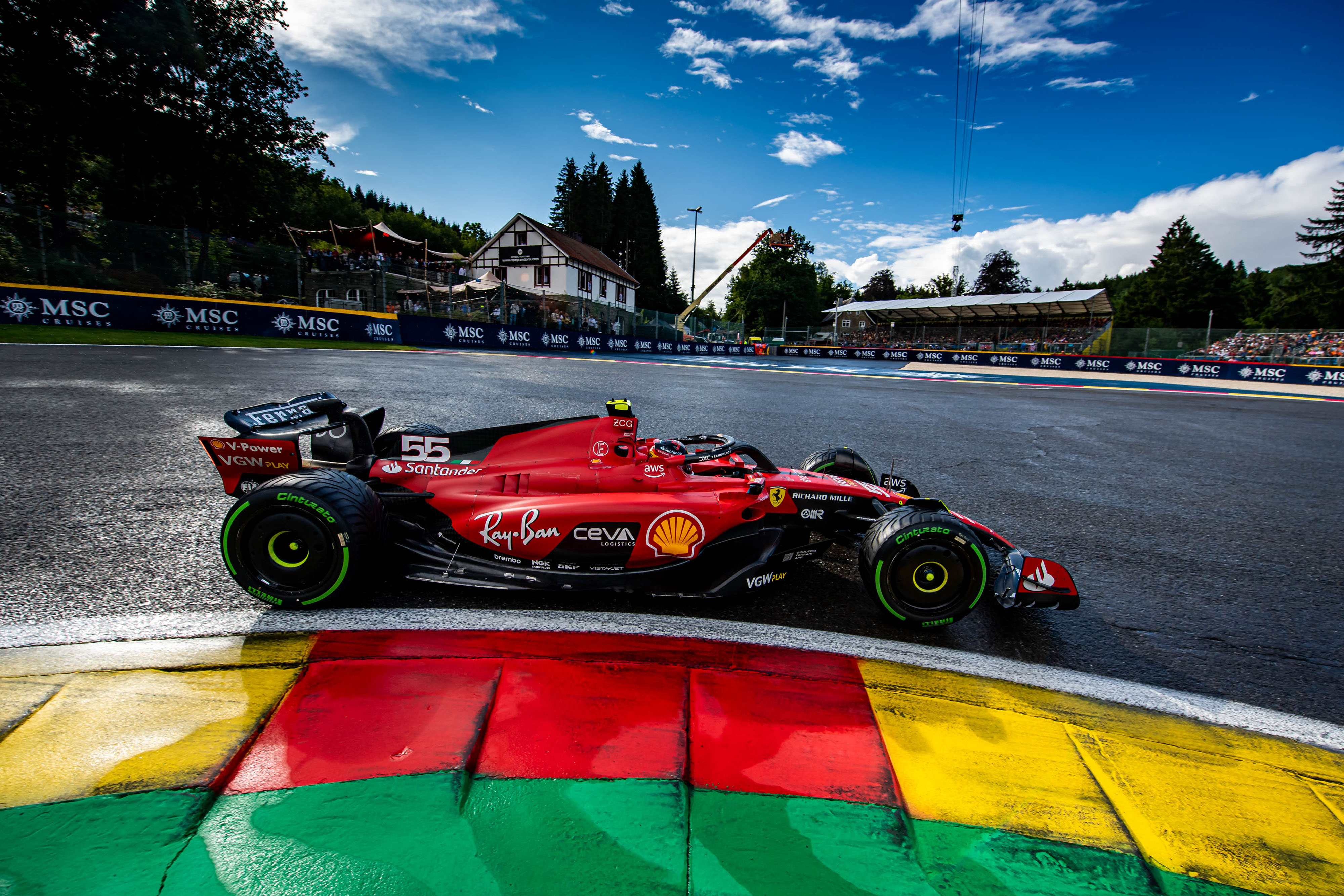
Carlos Sainz, Ferrari, at Spa on July 29, 2023. Photo by Ferrari.
Videos

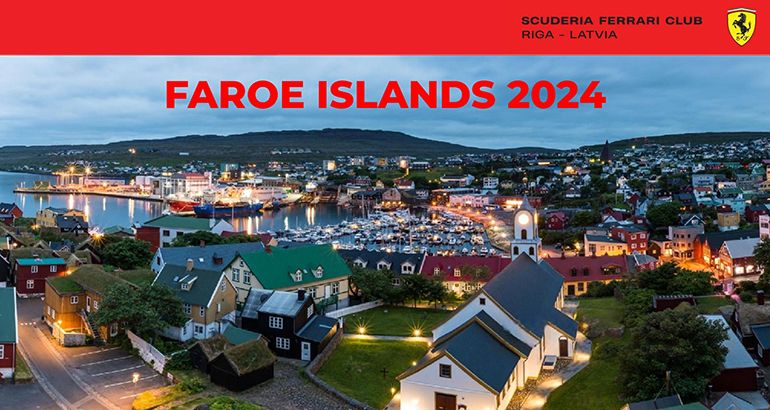
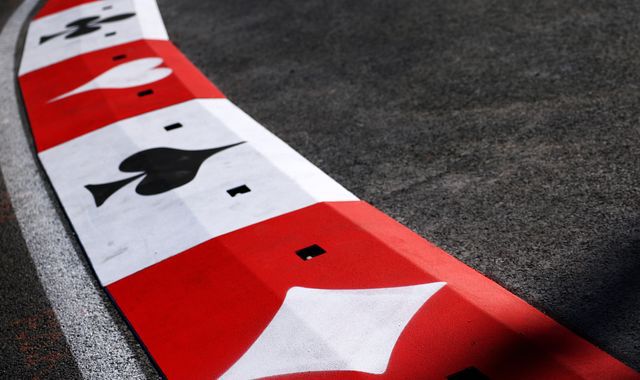
Comments
Authorize to comment